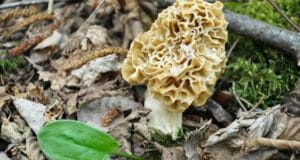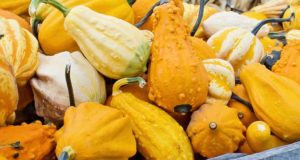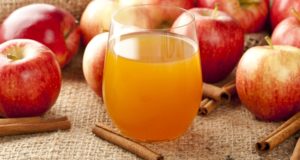
Image source: TheHomeGarden.com
In my family, we have long been concerned with healthy foods. Long before we began homesteading, we sought out organic foods, we bought mostly fresh produce, and frequented local farmers markets in a quest to eliminate as many harmful chemicals form our diet as possible.
With the advent of government-certified organic foods, we have lost some faith in that label. Organic certification is a multi-year process which requires the expenditure of thousands of dollars and constant intervention. This certification is beyond the reach of most small producers, who are the most likely to farm using true organic principles. We now try very hard to buy produce from people we can meet or from very reputable retailers.
Now, as if there weren’t already enough food dangers to worry about, we have the rise of the genetically modified organism in the agriculture industry. Genetically modified organisms are exactly what they sound like. Microbiologists take an existing organism, most often a plant at this time, and they start monkeying with its DNA. They splice in genes for desired traits and create something never intended by nature.
What is wrong with this practice, you might ask? Well, the honest answer is that the technology is so new and the long-term effects so understudied, that no one really knows for certain what the possible harmful effects of eating GMO foods might be. Some things, however, are known about this practice.
One thing we do know is that many of the genes spliced into crop plants are for herbicide resistance. One strain of GMO soy is called Roundup Ready. A field planted with this soy can be literally drenched in the herbicide and the only thing left alive will be the soy. This encourages the use of more and more herbicides, which accumulate in the soil and in the resistant crops. This means that these chemicals also accumulate in your grocery store and on your table. I can’t see any good coming from that.
New Survival Seed Bank™ Lets You Plant A Full Acre Crisis Garden!
Some of the GMO corn seed produced by GMO giant Monsanto is coated with neonicotinoids, a powerful pesticide. These seeds have been implicated in the ever increasing rate of bee colony deaths. Bees are in serious trouble these days, and GMOs may be playing a part in this. Other GMO crops have been modified to produce their own pesticides; they don’t even need to be sprayed to be a danger.
Another thing we know is that GMO plants have the ability to become “super weeds.” This has been the case with a GM canola, which has escaped and become established all over North Dakota. This plant is pushing out native plants and disrupting ecosystems. It is also incredibly difficult to control because one of its GM traits is herbicide resistance.
What we still don’t know is if there are any long-term health implications to eating GM foods. Some clinical studies have suggested toxic or allergic effects in lab animals fed GM foods. It has also been suggested that the human gut cannot process GMOs as well as natural foods, and that GMOs may disrupt or damage natural gut flora. Some of the most frequently modified crops include soy, corn, potatoes, and canola. Clearly, much more research is needed. In the meantime, when it comes to feeding yourself and your family, the risks of eating GMO foods seems too high to take.
One of the tricky things about eliminating GMOs from your diet is that there are no federal and very few state requirements to label GMO foods as such. Even certified organic foods can contain GMOs. While buying certified 100 percent organic products provides you with some safety from GMOs, it is certainly no guarantee.
As a homesteader, your best bet for eating GMO-free is to grow your own food or to buy it from people you know who share your principals. Fortunately, when it comes to produce, there are plenty of sources for non-GMO seed. We prefer heirloom varieties, which have the added benefits of being non-hybrid, and often particularly suited to a region. While being non-hybrid has no implications in the healthfulness of your crops, it is very important if you intend to save seeds.
In our part of the Missouri Ozarks, we are fortunate to have a local producer of non-GMO, non-hybrid seeds in varieties that are traditional and thus, well suited to our region. When looking for seed, try to find a local producer, but if you can’t locate one, there are plenty of Internet and mail order options. Heirloom Solutions is a great company to do business with, and they offer a membership that gives you a lot of extra stuff for your gardening needs, including members-only discounts on products. Heirloom seeds are well worth the cost.
Raising GMO-free livestock can be more problematical. Most commercially available feeds rely heavily on corn and soy. As noted earlier, these two crops are some of the most genetically modified out there. This fact alone makes getting GMO-free feeds very difficult and quite expensive. On our homestead, we grow pasture-raised, GMO-free chicken for our local farmer’s markets. In order to obtain certified GMO-free feed we have to drive 140 miles round trip, and pay almost twice what ordinary feeds would cost. This runs up the price of our product and makes it more difficult to sell. It also impacts our time, when we have to take half a day out of our schedule every time we need a ton of chicken feed.
If you are not able to locate a local feed store that caries non-GMO feeds, there is a good chance you will be able to locate a feed or grain co-op close by. This is an excellent way to offset shipping costs and take advantage of bulk buying discounts that your own feed order would not qualify for. We buy some of the grains for our goats and hogs this way. It is a good deal, is often more convenient than the 140 mile drive for chicken feed, and allows us to make and maintain contacts with like-minded famers and homesteaders. Delivery days can be almost like a social event, seeing folks we only see on these occasions.
If you can’t find a local dealer or a co-op, you are not completely out of luck. There are a number of vendors online selling GMO-free feeds. In this case, however, you will pay a large premium for your feed and an even larger bill for shipping. If you want to ensure your meat is GMO-free, it may be worth the expense, but only after you have exhausted all other options.
Given the state of our knowledge about the health effects of eating GMO foods, going GMO free seems the prudent thing to do. Given what we know about the negative environmental effects of GMO crops, it seems the responsible thing to do. Fortunately, if you are a fan of heirloom fruits and vegetables, your garden is already a GMO-free zone. With a little homework and a little extra expense, you can be assured of a supply of quality non-GMO seed. Raising your livestock GMO-free will incur a substantial added expense and potentially a bit of inconvenience, but it is well worth the effort when you consider that it is an investment in your family’s long-term health.
 Off The Grid News Better Ideas For Off The Grid Living
Off The Grid News Better Ideas For Off The Grid Living




